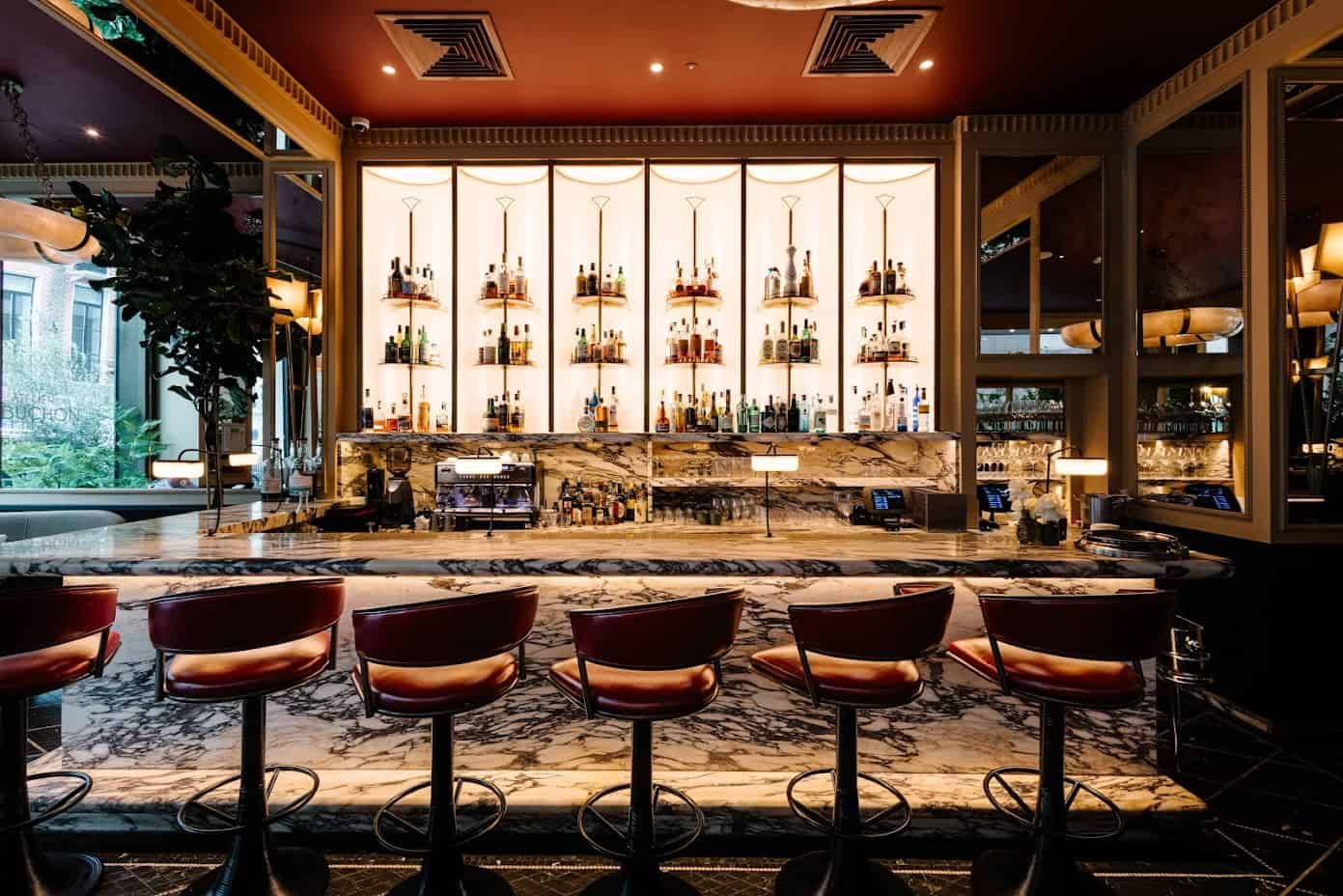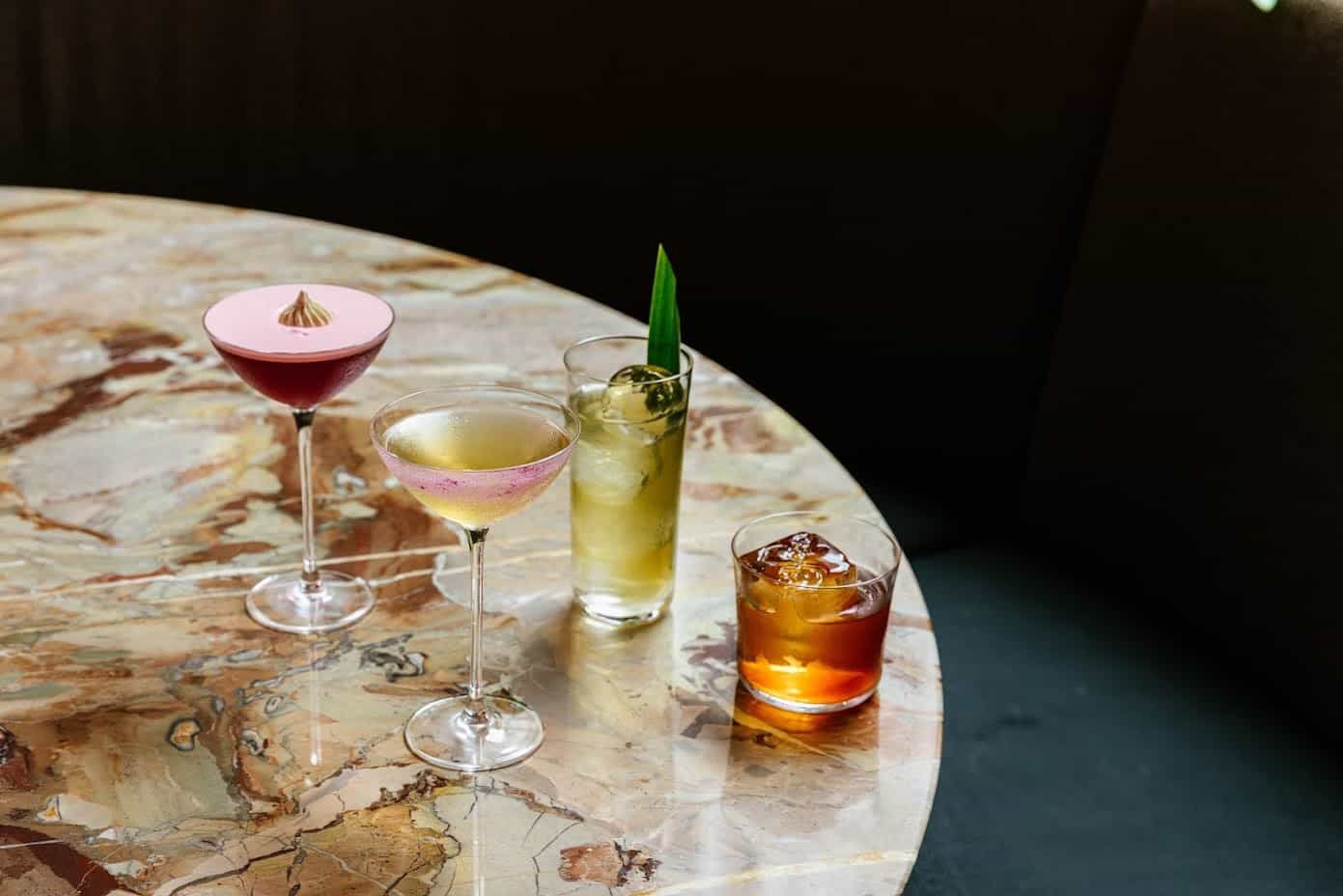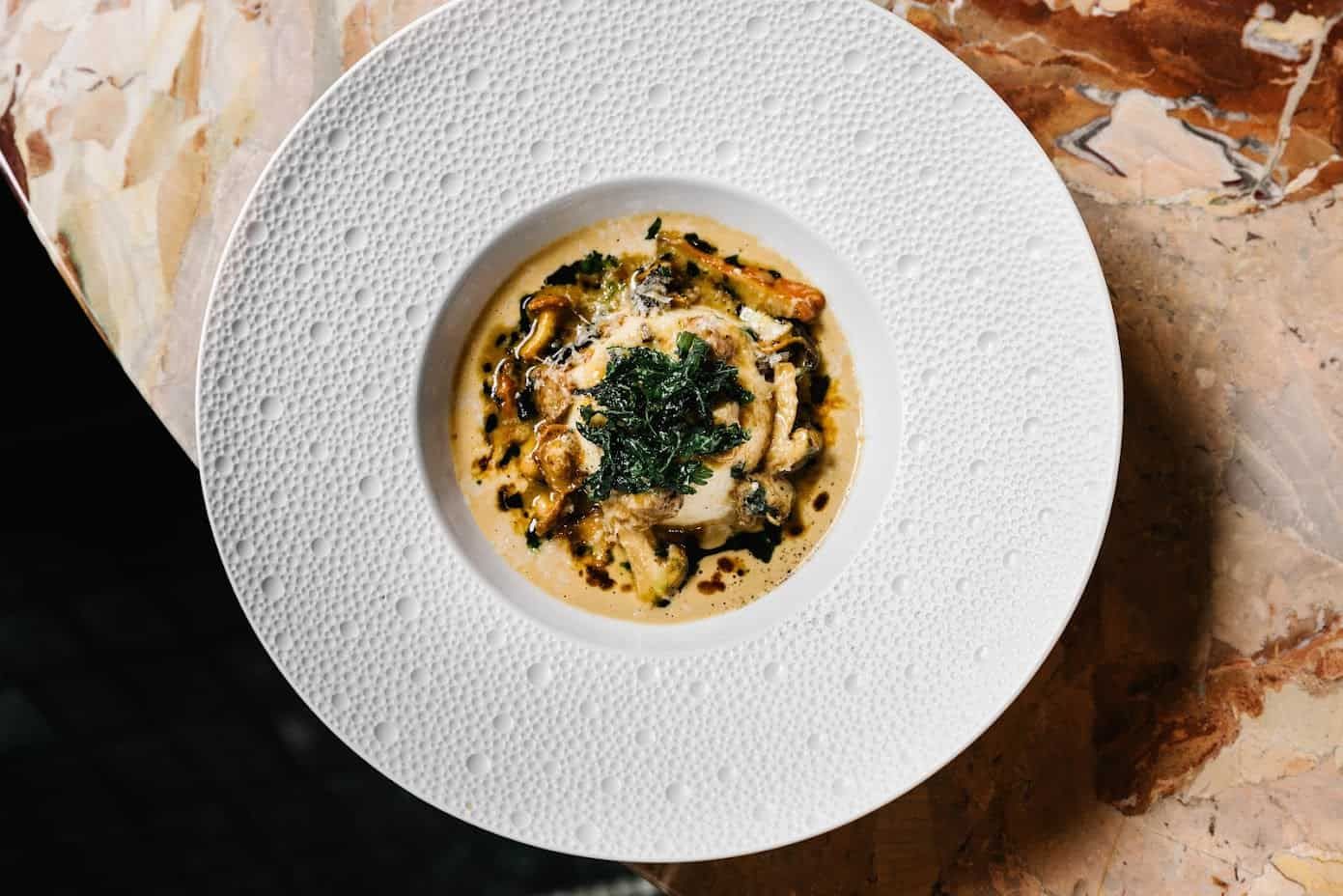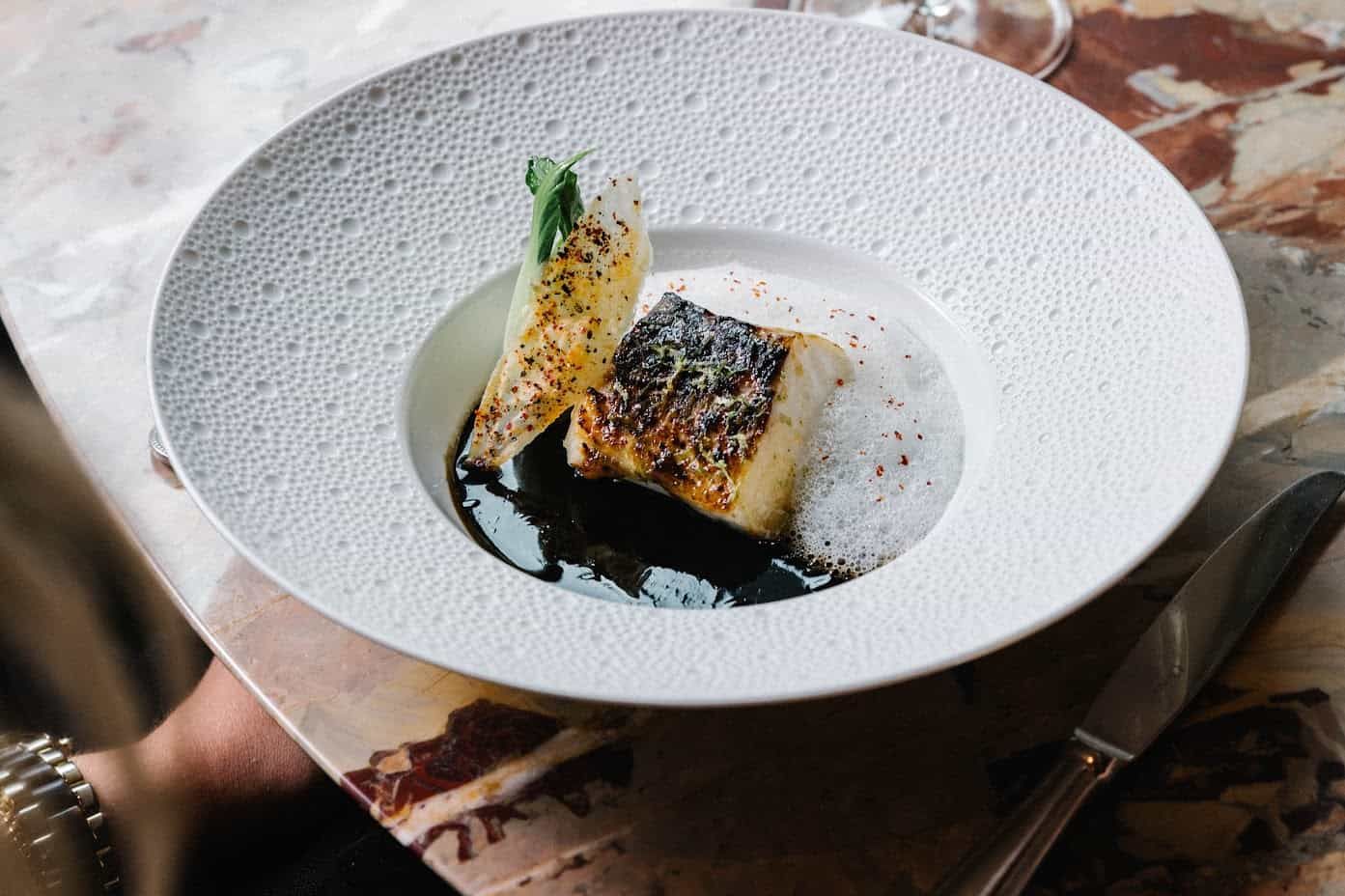The late great Joël Robuchon had an extraordinary career, which was also a classical journey through French cuisine. Starting in 1960 as a pastry chef in Poitiers, by 1980 he was an executive chef holding two Michelin stars at the Hotel Nikko in Paris. By 1981 he had opened on his own, and his restaurant, Jamin, was a stellar success, being awarded three Michelin stars within three years of existence. From there his fame just grew, perhaps peaking with legendary restaurant guide Gault Millau naming Robuchon the “Chef of the Century” in 1989.
So that’s quite an intimidating legacy to work with, but in their London flagship, the group he nurtured has created something worthy of the name. Unlike the previous incarnation of L’atelier, which was on West Street just by The Ivy, and which was known for the sort of theatrical food that was popular twenty or so years ago, the new L’atelier is a more coherent temple to French cuisine at its best.

The room itself is simply elegant and beautiful. The décor conjures up an Art Deco masterpiece within the modern shell. On one side of the long room, there is a marble bar that morphs into the open kitchen, with tables arranged in sections along the other side, almost like train carriages, albeit definitely Orient Express rather than British Rail. The paint is Robuchon’s trademark dark crimson offset by beautiful verdant plant arrangements on the wall and the two sides of the room are linked by intricate coving. I particularly liked the small semi-domed antechamber that led to the bathrooms. It’s timeless, classic, luxurious and very beautiful.
After a perfect dry martini – no surprise that they passed the test here – our waiter, formerly head waiter at The Ivy, presented us with the best selection of bread I can remember having eaten Wonderful mini baguettes, bacon-infused bread, a meltingly delicious parmesan roll and best of all the squid ink brioche. This was a layered, soft, flaky brioche that maintained alternative black and white layers throughout. Had to be seen to be believed, eliciting a very unusual yelp of delight from my companion, and was a clear and unmistakable signal that one was about to embark on a very, very proper dinner.

We showed no restraint with the bread, but luckily we were very hungry as what followed was equally spectacular and we devoured the lot. There was an amuse-bouche of foie gras and parmesan foam – earthy, rich, luxurious, before I had one of Robuchon’s signature dishes: lobster jelly spiked with emulsions like a Hearst spot painting, surrounding king crab which itself was topped with what I think is technically described as a “mound” or “enormous amount” of caviar. This was plutocrat dining for the New Gilded Age. My companion had a dish ostensibly assembled from more humble ingredients of mackerel and apple. It was simply delicious: perfectly cut chunks of pure (slightly cured?) mackerel offset with the acidity of apple along with beetroot and a hint of horseradish. Good grief it was a great plate of food.

For my main course, I had a rich, wonderful filet of beef, but as rich and satisfying as it was (and it was), once again my companion outdid me with Dover sole meunière. This is classic French cooking at its simple perfect best. Thoroughly dusted in flour, the huge flatfish had then been pan-fried until golden in a brown butter sauce, with added capers which crisp up, adding texture as well as acidity. The sole had been cooked whole and was then expertly filleted at the table by the waiter, bringing an orient express theatricality to the meal. It felt like having dinner in a grand old French restaurant back in the last century and was every bit as delicious as those meals of memory can be. My companion loved it, and it was the moment when you remembered a world where French haut cuisine ruled the world and, more importantly, why.

Desserts (most definitely not puddings here) continued the epicurean journey, finishing the meal with heights of over-indulgence: a chocolate dish which I scoffed too quickly fully to appreciate the various layers and textures, and a pear dish which was playful while demonstrating the various possibilities from that humble fruit.
So how good is this restaurant? It’s very, very good, obviously. But it’s also something more than that. It is a reminder of the greatness of classically cooked French cuisine, perhaps a polite repost to ubiquitous sharing plates, pop-ups specialising in the chicken dishes from obscure Indonesian villages and the insistence that queuing is better than booking. It is in short, the perfect, grand French restaurant of your dreams. It is highly innovative, but innovative within the traditions and techniques of French cooking. Cooking like this is harder to find in London than pubs serving Thai food or people who say they are foodies but “don’t do haut cuisine/fine dining”. They are wrong. L’atelier is right.
Related: PITTABUN comes to Camden Lock Market

